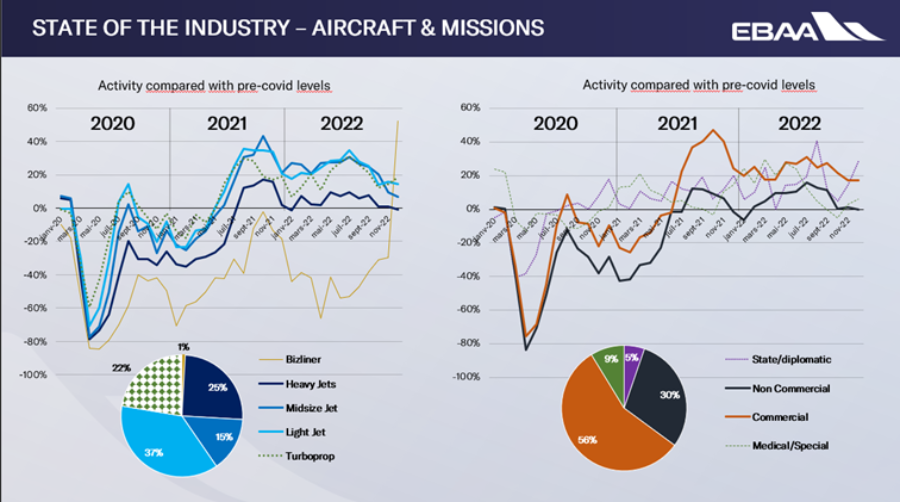Navigating the Challenges of the Business aviation Market: An Update for 2023
The past three years have been among the most complicated in the history of aviation. Not only has the COVID-19 pandemic caused the most disruptive episode in air travel history...
The past three years have been among the most complicated in the history of aviation. Not only has the COVID-19 pandemic caused the most disruptive episode in air travel history, but the political and societal climate has also witnessed a level of hostility towards aviation that has never been encountered before.
Business aviation in 2019 and 2022
2019 is the last year we can use as a reference, and it is interesting to consider the place of Business aviation in all of this. The first thing to note is that the European active fleet has not changed significantly between 2019 and 2022. The only shift that has been observed is a result of Brexit, which has mostly led to de-registrations in all UK-linked registries.
If we measure the industry’s performance in terms of the number of movements, we can describe 2022 as a very peculiar year for the European Business aviation industry. Indeed, never before have so many business jets flown in the European sky, despite the continued disruption caused by the pandemic, inflation, rising costs, the recovery of airlines, and even a war in Europe.
However, the situation is more measured than it appears. 2022 is marked by significant changes in the trends that had been observed until then: there have been more small jet and turboprop flights, more demand for charter, less long-haul, and less private aviation. There has been a recovery in North America and Africa, but almost no activity in the East (Russia and Asia).
Economic Impact
From an economic standpoint, the decline in long-haul flights leads to a significant loss of margins for Business aviation operators, which is not compensated by the increase in short-haul activity, even if that increase is significant. Furthermore, more demand means more competition in an already very competitive industry, with operators being pulled down into a more aggressive pricing ecosystem than ever before, affecting their revenues even further. Last but not least, the increase in activity accentuates the industry’s labour shortage even further.
Uncertainty in 2023
It would be presumptuous to claim to know what awaits Business aviation in 2023, as the challenges are numerous. Social pressure, regulations, taxes, the arrival of new players and new technologies, and geopolitics are all parameters that will have a real and measurable impact on Business aviation.



